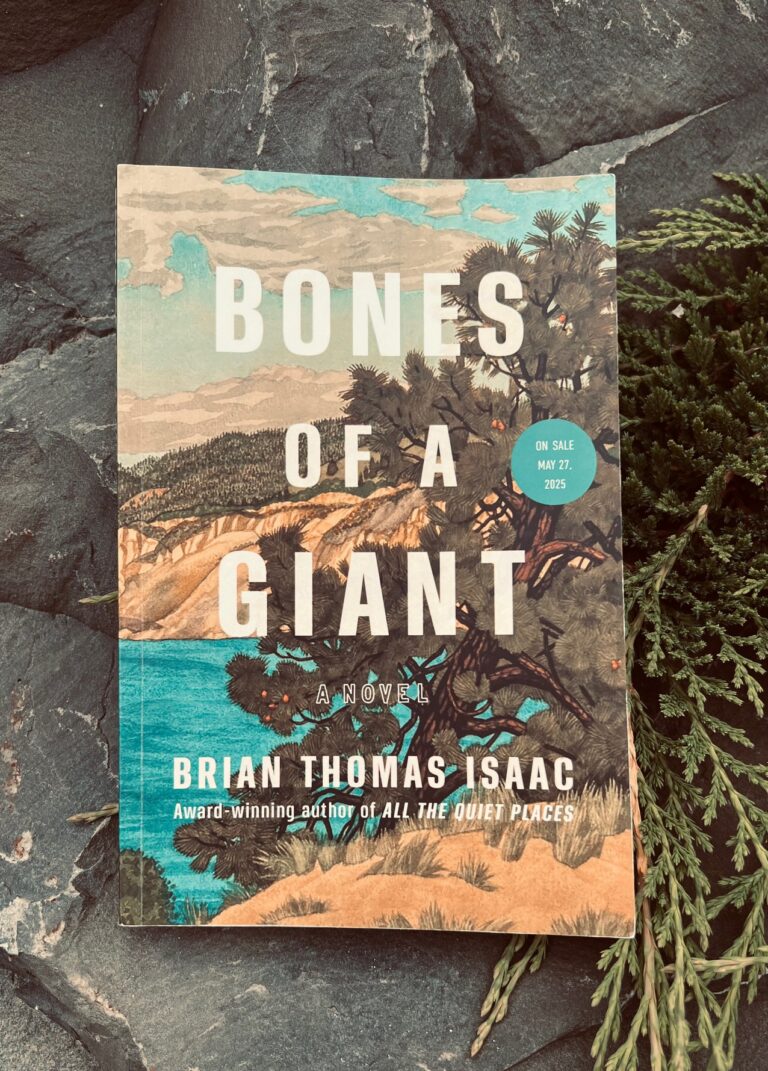Book Review: Don’t Fear the Reaper by Stephen Graham Jones

Although I don’t consider myself a huge horror fan, I’ve been reading lots of it this past October, and I’ve now read the first and second in the Indian Lake Trilogy by Stephen Graham Jones. Don’t Fear the Reaper is the second in the series, returning to the site of the bloodbath from the first book, My Heart is a Chainsaw, in Proofrock Idaho. And the body count racks up quickly in this second installment, so if you read and enjoyed the first, you’ll definitely want to check this one out. And the third and final installment is coming in spring 2024, so I’ll probably read that one too because once you get 2/3 of the way through, why stop there?
Plot Summary
Jade Daniels has returned to her small hometown after four years away battling the court system and trying to secure her freedom. After the slayings of 2015, she was one of the few people left standing, so many accusations of murder were levelled against her, including the death of her own father, Tab. Finally free in December of 2019, she visits Hardy, the retired Sheriff who was responsible for the town during the massacre of that fateful summer, and together they acknowledge the horror they’ve been through, both dulled from the brutalities they witnessed. But Jade only gets a very short reprieve, as she learns of a mass serial killer named Dark Mill South who is being transported through the mountains in their area, and he suddenly shows up on the shores of Proofrock. The killings begin again but they are all different – Dark Mill South doesn’t have a specific style of murder, although he makes use of his ‘hook hand’ more often than not. This time around Jade doesn’t need to do any convincing; people quickly realize they are in danger and mobilize to help, including the new sheriff, but many are isolated in their homes due to the raging snowstorm, so it’s easy pickings for a serial killer. We follow Jade and a few other Proofrockians for a terrifying two day period as they try to reclaim their battered town from another source of evil hell-bent on exacting revenge.
My Thoughts
In the first book, we learn of Jade’s obsession with horror flicks. She wished a serial killer upon her town back then, and unfortunately, got her wish. Throughout that book and this current one are constant references to classic horror movies about killers. Jade, and now many other citizens of Proofrock have armed themselves with knowledge about what to do in these situations through the movies they watched, so as Dark Mill South stalks his victims, the characters are focusing on movie plots to strategize their escape. Viewing their real life situation through the lens of a movie accomplishes two things; it provides a healthy distance in which to witness their own trauma, but it also explains away any coincidences in the plot, because it’s entertainment! So it works well in framing the story and gives the characters something to think about in addition to their imminent deaths, but it does wear on the reader, and by the end of this 450-ish page novel, I had had enough of the movie references.
I’ve mentioned in previous reviews of Jones novels that he is a Blackfoot Native American, and his protagonist and hero Jade is Native American as well. So is Dark Mill South, so there’s a suggestion that Jade is the only one who can defeat him because of their shared background. This link isn’t dwelled upon for long, but it also connects to why South is the way he is; one of the theories behind his twisted personality is that he was a forced into a residential school as a child, and like many of his fellow students, subjected to torture through regular beatings, sexual abuse, and starvation. Residential schools aren’t often mentioned in Native American books, or maybe they are, but I simply haven’t read enough Native American books to properly judge this (it feels like there are significantly less Native American authors than Canadian Indigenous writers being published). Intergenerational trauma within the Indigenous population is something we speak about often in Canada now, in fact, we have a day dedicated to it, but the link between a murderous rampage and the residential school system is a chilling one, because we know it’s happened before, and sadly, may happen again. This reminder is where the true horror of the novel lies.





I probably won’t read this series but I have heard good things about it and I think using horror and it’s tropes is an interesting way to talk about the generational trauma of residential schools. You’re right that I don’t seem to see as much of that mentioned in writings out of the US.
Too gory for me, but I can imagine the film references would be fun – for a while!
Yes they are fun at first – good thing there is a long time between installments in the series!
Woo boy! Sounds like a nightmare. 😬 You are tougher than I am!
It’s so funny how some people really love SGJ. I love the way his plots are unique, but then I read the novel, and at some point, he goes down some crazy, seemingly-aimless, totally confusing road. One part of Demon Theory that I liked was all the movie references, but the story ended up making little sense. Maybe I WOULD like these books.
I would trying reading the first in the series Melanie, and then feel free to abandon the second and third if it doesn’t work for you. He sticks pretty closely to the plot in these so far, but I totally understand what you’re saying about the tangents